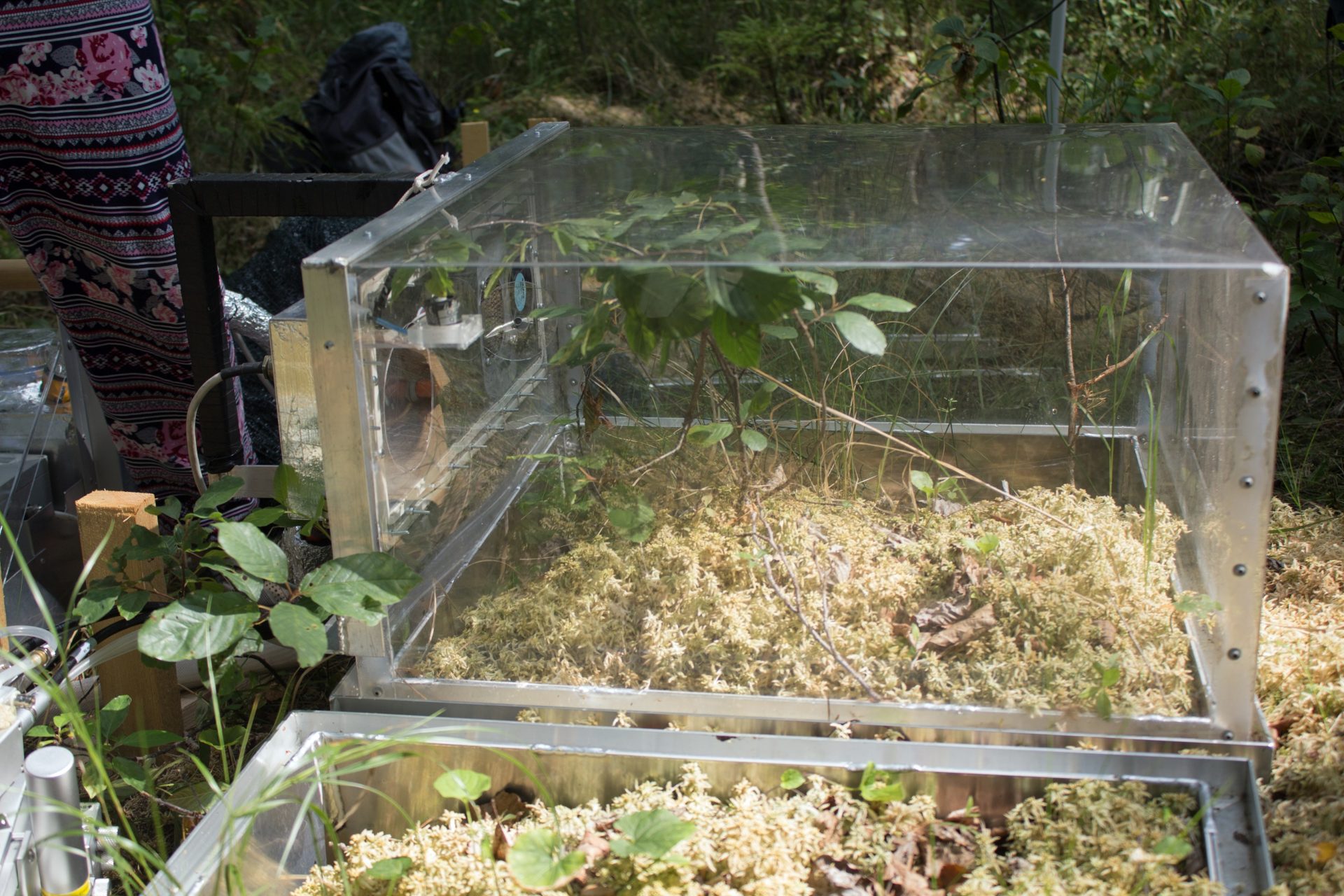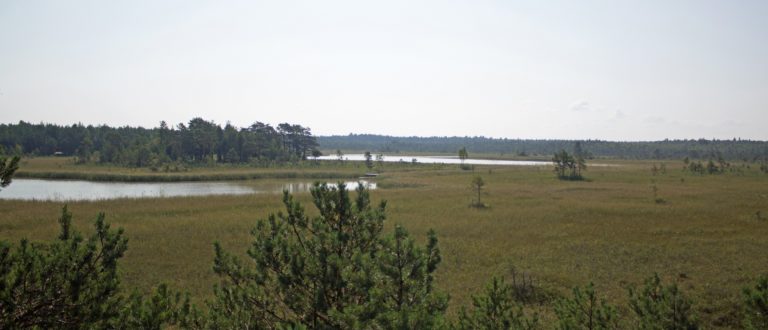Degraded peatlands, abandoned after exploitation, emit continuously and intensely; disproportionately more in comparison to the size of the area they occupy. In fact, undamaged peatlands store around 30 percent of the global carbon on only 3 percent of the land area. LIFE Peat Restore aims to reduce greenhouse gas (GHG) emissions from degraded peatlands by restoring their function from GHG source to sink. To achieve this, the sites must be rewetted, mainly by building dams and filling ditches.
In addition to restoring peatland habitats, the project employs the GEST (Greenhouse Gas Emission Site Types) approach to estimate GHG emissions from all sites, before and after restoration measures. In contrast to measurements using chambers – which is an instrumental method also employed in the project – the GEST approach calculates emissions and the global warming potential using vegetation mapping data – GEST vegetation forms – combined with water table data. More detailed explanation of the techniques here.

Experts from all project countries have been collecting data for the past two years; mapping the GEST types on all sites and building a baseline prior to the start of restoration measures. Water level monitoring devices and vegetation plots were also set up to monitor changes caused by the restoration measures. When possible, the work of collecting data was further complemented by available historical data, as well as by working together with local actors to complete forest inventories. Outcomes of these efforts may be reviewed below:
GEST Analysis Monitoring Report
The GEST Analysis Monitoring Report provides an overview of all current GEST-Types identified in the project sites prior to the start of the restoration measures. It is expected that rewetting will cause some of the GEST-types to change, as the landscape will also change after restoration measures. Moreover, 3 new GEST-types were created and added to an updated GEST catalogue published in May 2019. These new ‘GEST-types were identified due to special vegetation forms with very different environmental conditions (i.e. pH, water level). Furthermore updates on formerly described GEST-types based on further literature were suggested. In the future GHG measurements at the project sites might help in further calibrating the GEST-types. Go to the link above to learn more about the steps taken, criteria used to convert the vegetation units into GEST-types and overall results.
First GEST/GHG Balance scenarios
The overview established in the GEST analysis report forms the basis for further calculation of the GHG emissions, which is reflected in the ‘First GEST/GHG Balance scenarios’. Different scenarios were used based on the GEST approach to estimate and evaluate the climate effect of the restoration measures and to quantify the reduction potential of the GHG-emissions. According to results from the previous report, two main GEST-scenarios were described: (1) Baseline scenario (business as usual, i.e. without restoration) and (2) Post Restoration scenario (after restoration measures). These scenarios allow the comparison of the climate impact between implementation and non-implementation of the restoration measures. Check out the report to explore further the formulas used and steps taken to develop the scenarios for each project site.
First data on application of GEST approach in the Baltic region: vegetation mapping of pilot peatlands
From September 26 to 28, 2018, the LIFE Peat Restore team discussed the results of the GEST types identified in the Baltic countries and summarised it in an article to present at the Mire vegetation conference, in Minsk-Grodno, Belarus. The article titled ‘First data on application of GEST approach in the Baltic Region -Vegetation mapping of pilot peatlands in Lithuania, Latvia and Estonia’was then published in the abstract book: “Vegetation of mires: actual problems in classification, cartography, usage and conservation”.


